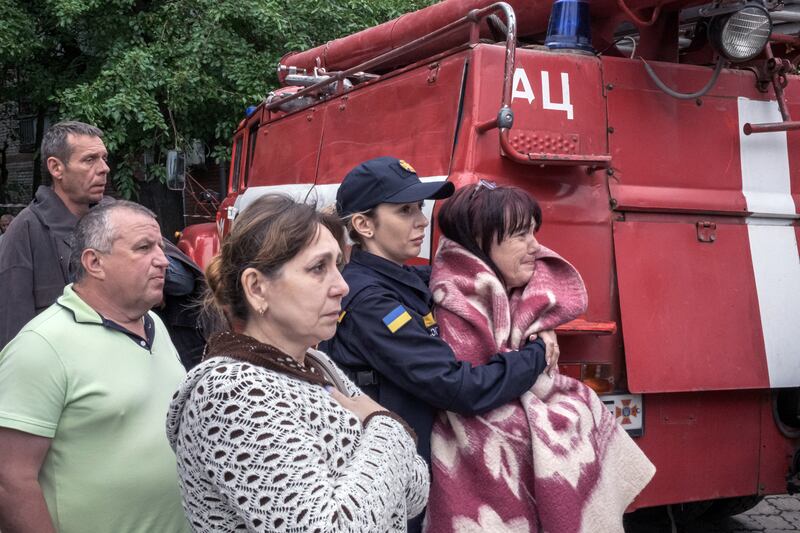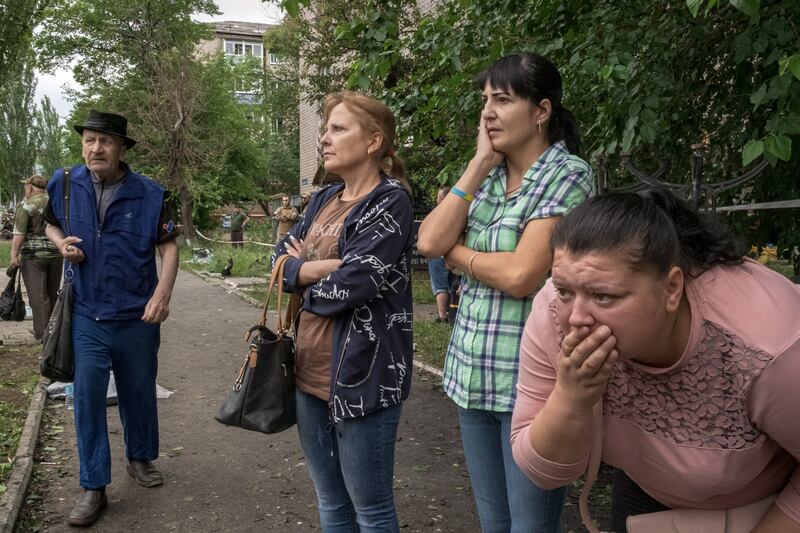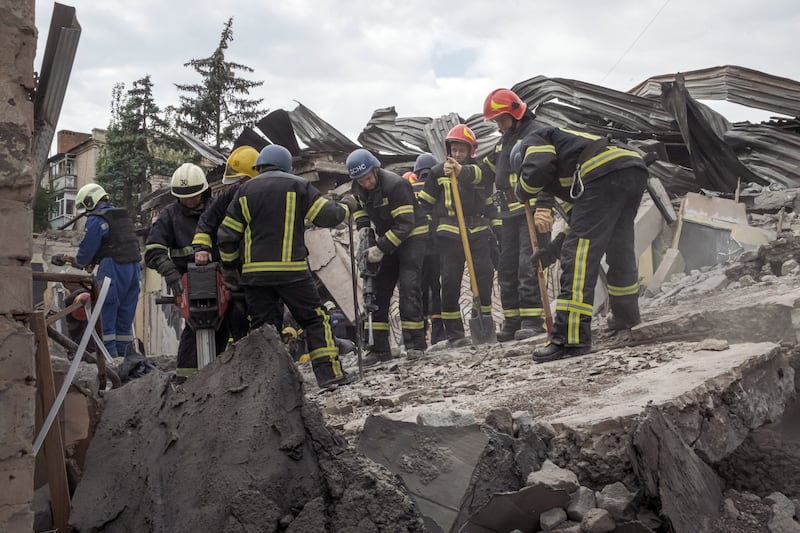Mykyta Karagodin and his friends had just gotten their mango-passion fruit drinks and placed their dinner order on the terrace of the Ria Lounge on Tuesday night – a lazy summer evening at a popular restaurant in the eastern Ukrainian city of Kramatorsk.
Then they heard a whistle.
“First, we thought it was a plane, nothing too serious. But then someone screamed ‘Down on the floor!’” said Karagodin (23). “Then there was an explosion.”
A Russian missile landed a direct hit on the restaurant during the dinnertime rush, when the place was bustling. The blast wave threw diners and workers against walls, furniture and each other, battering and slicing them with shards of glass and other debris.
At least 12 people, including 14-year-old twin sisters and another teenage girl, were killed. Ukrainian authorities said 56 other people were wounded. At least one person was believed to be still under the rubble.

In the confused moments after the detonation, Karagodin recalled, a voice shouted for people to head to the basement. He and his friends pulled wounded and disoriented people downstairs with them. “The first floor was completely gone,” he said in hospital after receiving treatment for shrapnel wounds and a concussion. “We were all very lucky.”
Kramatorsk is just far enough from the fighting to tempt people into going about normal daily lives
Rescuers worked through the day, digging out what was left of the restaurant in search of victims or possible survivors. The terrace where Karagodin and his friends were waiting for salads was a mess of overturned black and white sofas, near a jumble of jagged blocks of concrete. The restaurant’s owner paced while talking on her phone.
As a crane lifted debris off a large pile of twisted rubble, distraught friends and relatives of people still missing waited anxiously behind a police ribbon across the street. When a body was pulled from the rubble, people strained to see whether it was their loved one. But each time, the body bag was zipped tightly, and an emergency car quickly took it to the morgue.
Kramatorsk lies just 30km from the front lines and the devastated city of Bakhmut, in the Donetsk region – near enough to be a frequent target of Russian missiles, and a way station for troops. But it is also just far enough from the fighting to tempt people into going about normal daily lives, especially in recent weeks, when the weather turned warm and strikes were relatively rare.

Ria Lounge, known to many as Ria Pizza, was a long-running haunt, particularly popular in the summer because of its covered outdoor seating. It is close to the Hotel Kramatorsk, which was badly damaged in a Russian attack last summer. The restaurant had closed after Russia’s invasion of Ukraine began in February last year, but reopened several months later.
The restaurant is often full of local residents, foreign journalists, aid workers and Ukrainian soldiers.
Russia’s Defence Ministry said in a statement that it had struck a Ukrainian army command post, making no mention of a restaurant or civilians, and a Kremlin spokesperson repeated Russia’s frequent, false claim that it does not hit civilian targets. It was not clear whether a military command post existed nearby, though soldiers are often housed in the neighbourhood when they are rotated away from the front.
About 20 people still stood across the road, behind the police tape, seemingly rendered silent by fatigue and anxiety
The medical director of the hospital in Kramatorsk, Hanna Scherbak, said 49 wounded people were admitted there after the attack, suffering from head injuries, shrapnel wounds and broken limbs, including one who later died. “We didn’t have any military people. These are all civilians,” she said.


Ukraine’s intelligence agency, the SBU, said it had detained a man who was accused of helping to direct the missile strike. It said the man – described as a Kramatorsk resident working for a local gas transportation company – had sent video footage of the restaurant to Russian military intelligence.
By late Wednesday, rain had driven away most of the bystanders at the scene of the attack, but about 20 people still stood across the road, behind the police tape, seemingly rendered silent by fatigue and anxiety. They had been there all day: used paper cups, empty water bottles and energy drinks were piled up around their makeshift waiting area.

Friends and relatives of those still feared trapped under the rubble stared at the backs of emergency workers clearing debris.
Nearby, a middle-aged man paced back and forth.
“Let them all be alive there,” a red-faced woman in the group said to him.
“Let them all be alive,” he echoed. – New York Times





















